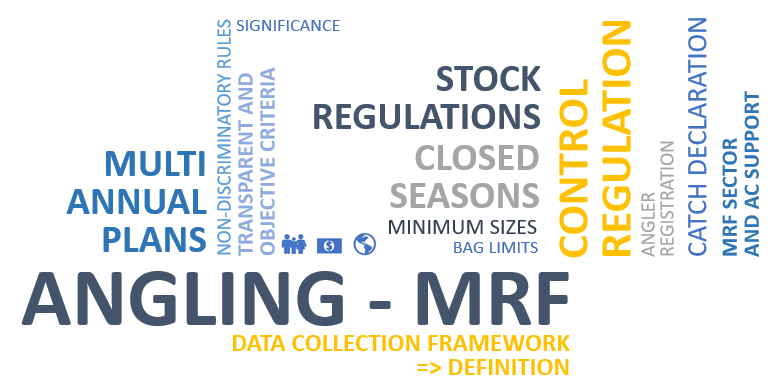It is high time to include Marine Recreational Fisheries in the Common Fisheries Policy
22 June 2022
Download the EAA position paper, including EAA's proposed amendments to the EU's Common Fisheries Policy (CFP):

Our vision:
The year is 2030. Harbours all across the Union, down to the smallest ones, are bustling with activity. Hotels, pensions and camping sites are offering an exciting stay for anglers both domestic and foreign. Tackle shops are found everywhere to cater for huge demand. Fishing guides, boat rentals and charter boats flourish. Restaurants are catering for all these tourists, attracted by the world class fishing they find here. It’s a blue economy success story. This spectacular turn of events relied on the recovery of those fish stocks that inspire anglers to fish. Stocks such as Bluefin, seabass, cod and dorade have rebounded to a state of abundance.
The groundwork was laid in 2023 when a bold vision of Parliamentarians, Member States and the European Commission embraced the inclusion of recreational fisheries in the CFP and the full implementation of article 17. In doing so, fishing activities that combine a high economic and social performance with a low environmental impact were prioritised and small coastal communities have prospered. The rest, as they say, is history.
Back to the here and now
The EAA sees a clear path towards a 2X sector growth in the coming 10 years if managed optimally. Success stories from the USA, Australia and New Zealand lead the way. People travel half the planet to have access to world class fisheries - why not offer this at home? Such a transition will require an openness to investigate best stock management for those stocks that hold exceptional value for Marine Recreational Fisheries (MRF) when compared to their commercial value. Maximum Economic Yield could be such a method.
| ‘A scientific framework for the distribution of catches between the commercial and MRF sector is missing and needs to be fixed’ - Harry V. Strehlow, Thünen Institute of Baltic Sea Fisheries, Germany |
The recreational sector and its value chain already represent a large proportion of the employment along rural and coastal regions of Europe. It is time to take the brakes off the MRF sector and to serve coastal economies with sustainable, well-paid jobs. It is time to offer a level playing field to the millions of Europeans who want to enjoy the public resource that are our fish. It is time to really acknowledge MRF as a part of the fisheries sector and to fully consider it as an integral part of coastal fisheries management and the Common Fisheries Policy.
| Catches from recreational fisheries often generate a higher economic added value compared to commercial catches. A recent study in Catalonia, Spain estimated recreational catches at as little as 5% of total catches. However, the revenue generated equaled 87 % of the value that the commercial fishery sector produced that year! That is a whopping 16 X value factor per kg of fish in favor of MRF. - Catalonian figures |
The EAA calls for CFP inclusion to safeguard and foster our sector’s growth and development. Heathy fish stocks are our capital, and the CFP is the bank managing those stocks. We must therefore claim a seat at the table. We will leverage our influence for healthier and more natural stock structures and ecosystems. We will support the implementation of article 17 of the CFP, with transparent and objective criteria for catch allocations and with it, the general reappraisal of fisheries that combine high revenue, a lot of jobs and a low impact on fish stocks. We will call for angling specific objectives to support growth-oriented management as part of a greener blue economy.
| - “Increasing the value of marine recreational fisheries is possible if it is fully integrated into the CFP and good fishing opportunities exist. - All sectors must work together responsibly to balance competing management objectives and new science is needed to develop the data and tools to underpin policy” Dr. Kieran Hyder, Principal scientist at CEFAS |
Currently the data on recreational fisheries remains inadequate while recreational fisheries are not represented on equal footing with commercial fisheries and aquaculture in the EU’s CFP. Still, it is worth noting that MRF is managed under the CFP in many different ways.

World class recreational fisheries that serve the best interest of coastal communities cannot be achieved without a fair representation in the CFP. A better understanding how policy choices affect our sector will be invaluable as well. There is a wealth of MRF data still in need of mining, a pot of gold for coastal communities to prospect.
Better data, better policy, better business, better lives.
| “Anglers are to be involved in the decision-making process for management measures or participation and acceptance could very well stall.” - |
Over the past 2 difficult years the angling sector has boomed as an easily accessible outdoor activity that bridges generations, highlighting its growth potential and resilience. So, can the EU afford to include MRF in the CFP is asking the wrong question. As a 10.5 billion EURO sustainable Blue Economy sector with untapped growth potential, can the EU afford not to?